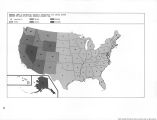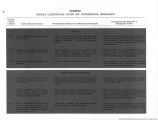| OCR Text |
Show tion and Multiple Use Act of 1964,33 are notable exceptions. Explicit proposed land use plans, designed in part to make them available for public scrutiny, should be supplemented by a requirement for increased use of public meetings or hearings where land use plans would be explained and public reaction determined. Public notice of such meetings and notification by mail to interested groups, including local governments in the planning area, should be made a preliminary condition to public hearings. The follow-up to public hearings could occur at several levels. Individuals and interest groups, of course, could present their views, including alternatives and counter-proposals, directly to the agencies as well as to Congress. Beyond this, however, state and local government planning officials would be available to pursue the interest of the local and state individuals and organizations they represent. We also believe formally constituted advisory boards, on which we submit recommendations in Chapter Twenty, can serve a vital role in the planning process. Since they will be comprised of people in the region or locality for which the land use plans are being developed and will represent all of the principal interests affected by the decisions flowing from the planning process, we think it particularly appropriate for Federal land administrators to seek their advice on planning proposals, and we recommend that consultation with advisory boards be required by statute. The role of these boards will be to advise the officials who are engaged in land use planning on the probable impact of the proposed land use decisions on the locality, to suggest viable alternatives that should be considered, and to provide the administrator with opinions, views, and information that is relevant to the planning operation. They should function actively from the inception of the planning process, starting before any plans have been developed, and should have a continuing role. Federal Interagency Coordination Recommendation 12: Land use planning among Federal agencies should be systematically coordinated. The case for effective interagency coordination is simple-the Federal left hand should know what the Federal right hand is doing. We have found that there has been little regional coordination among Federal agencies. The agencies compete with each other in managing the Federal lands to meet the needs of the public in a broad sense, but with no given or 33 n. 5, supra. derived objectives for each agency and with no congressional directive to coordinate either land use planning procedures, or operational programs in furtherance of the objectives. In many instances, there is not only duplication of services and facilities, but lack of concern for and the impact of one agency's program on those of other Federal agencies. Opportunities for using different classes of public lands for a specific purpose cannot be fully examined because the agencies plan independently. Effective coordination requires that the agencies speak the same language and that there be a free interchange of proposed plans. When modifications are suggested by one agency to another, the suggestion should not require translation. Therefore, there should be common definitions, units of measurement, systems of classification, sources of information, and procedures for the collection and dissemination of information. This would provide a common language for land use planning among Federal agencies, and would facilitate external review and understanding of these plans. Discrepancies in, and inadequacies of, data would be more easily isolated, and program planning would be improved accordingly. While a policy requiring circulation of proposed land use plans developed by individual agencies to each other may appear to satisfy the need for coordination, we believe this approach embodies the major weakness, that the various classes of Federal land involved have not been considered together from the inception of the planning process. Generally, the field administrator for each agency is working with a different set of program and policy assumptions, and he views his unit of Federal property largely as an entity isolated from surrounding private and other Federal land for policy and program planning purposes. Unified planning for all Federal lands in a region or similar large area would permit coordinated application of policies and practices, as well as the synchronization of program action schedules that flow from these land use plans. Opportunities for coordinated development of different forms of recreation opportunity between adjacent or intermingled national park, national forest, wildlife refuge and BLM lands could be examined. Habitat management planning and population level decisions for big game species that migrate among parks, forests, and grazing land can be synchronized with the other land use objectives for these different Federal lands. Seasonal shifting of livestock use between adjacent national forest and BLM grazing lands could be more effectively scheduled. Routing and construction scheduling of highways, and general access to and through intermingled Federal lands, could be accomplished more effectively. Controversies between land administering agencies 60 |







































































































































































































































































































































































